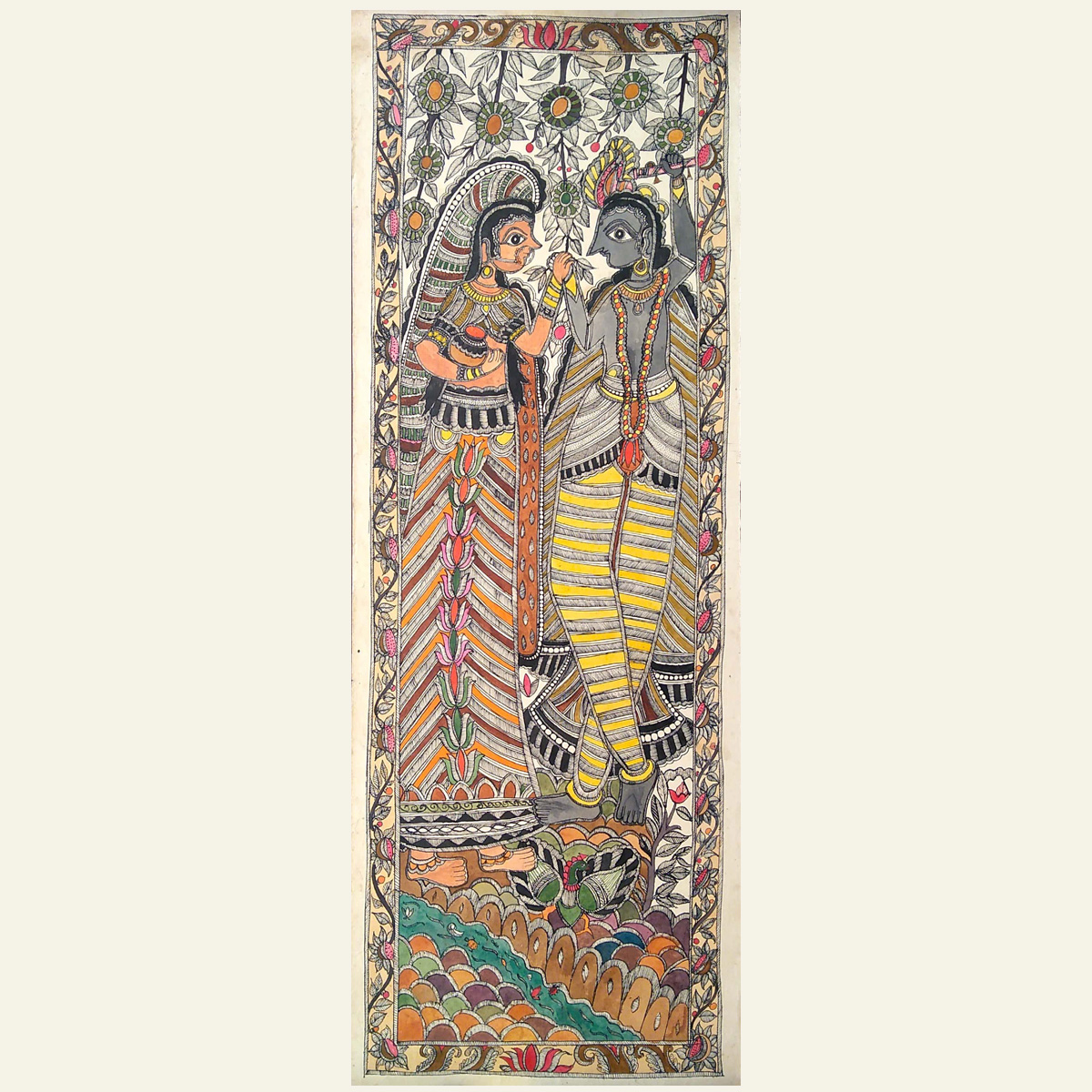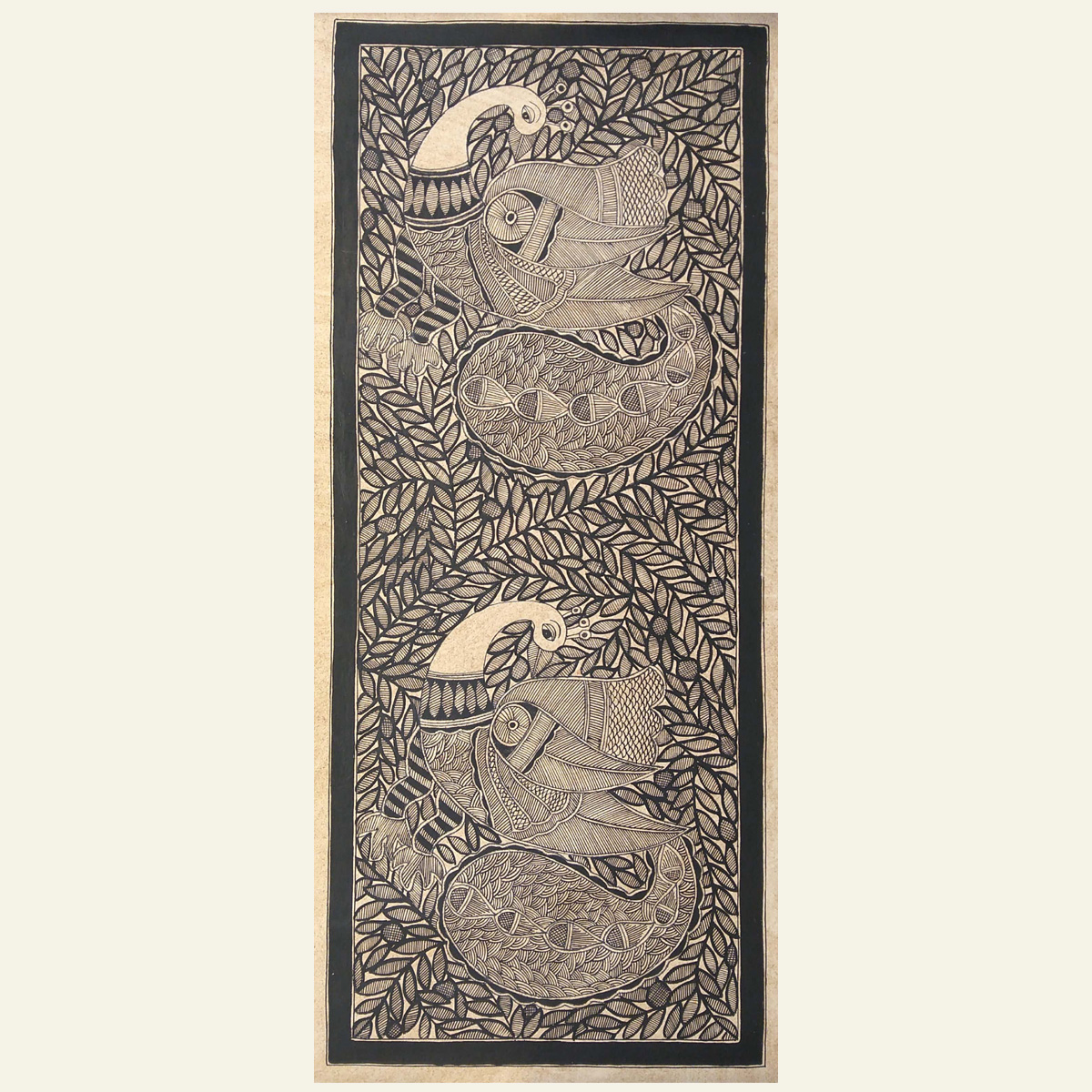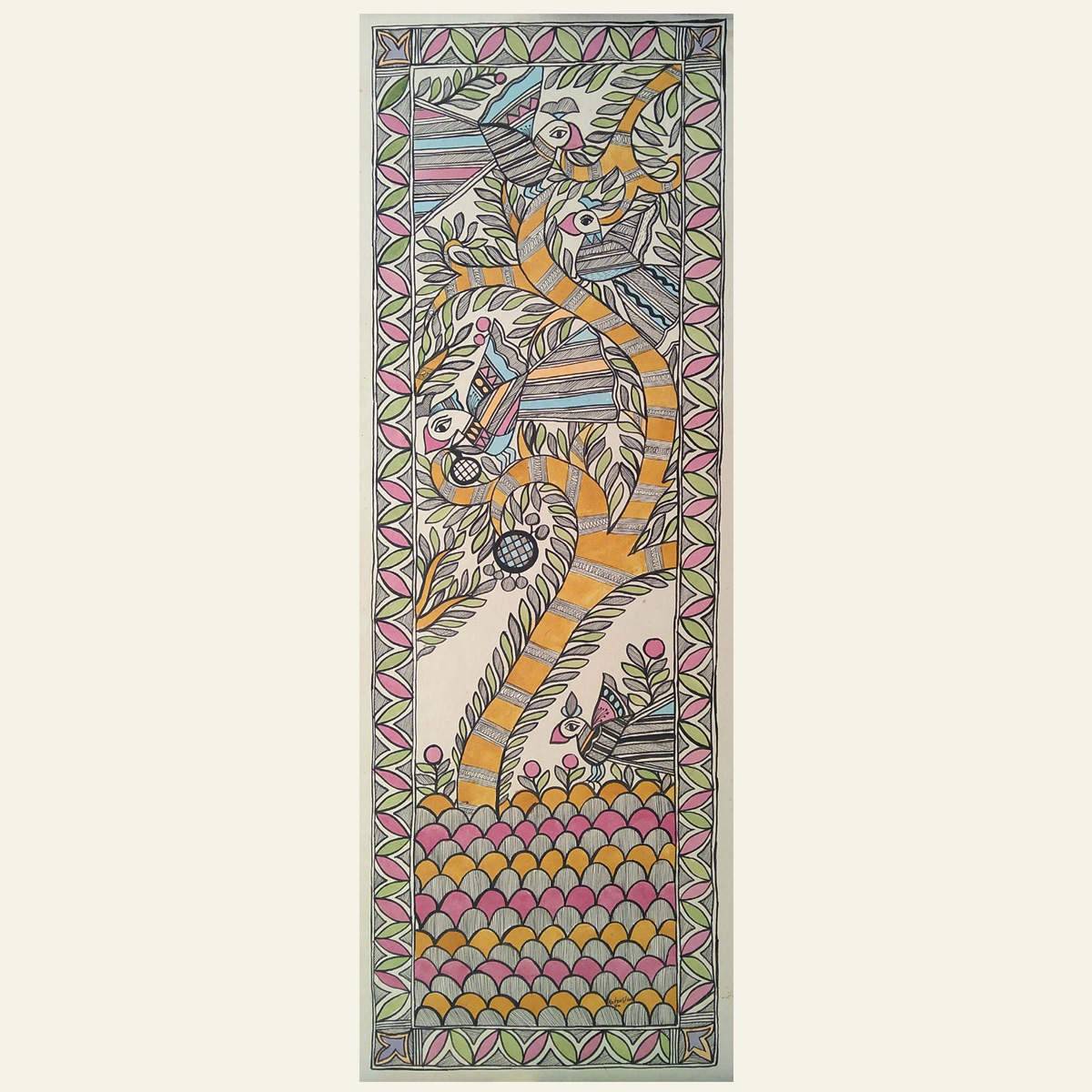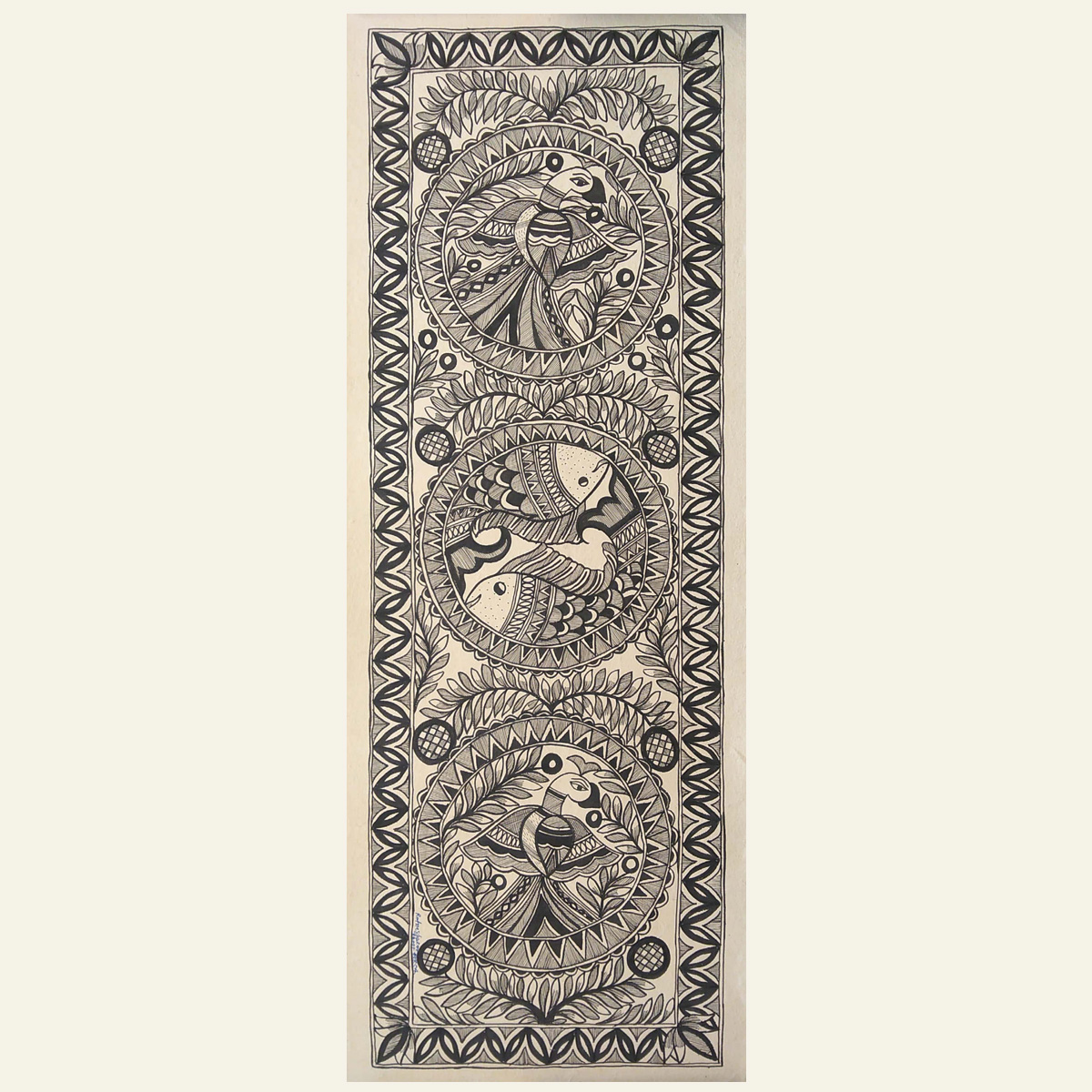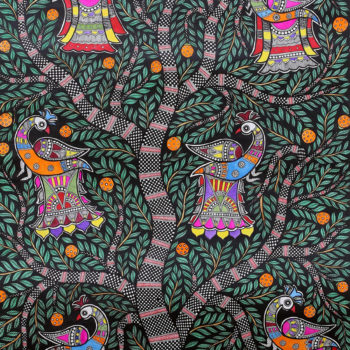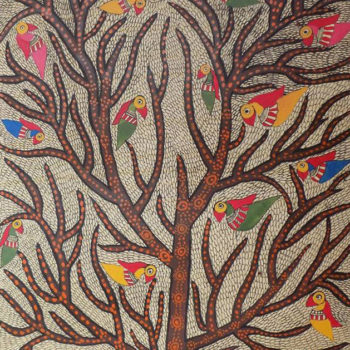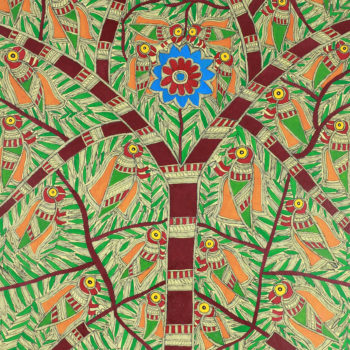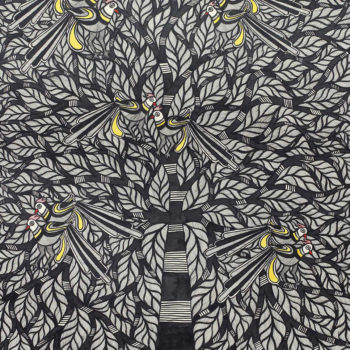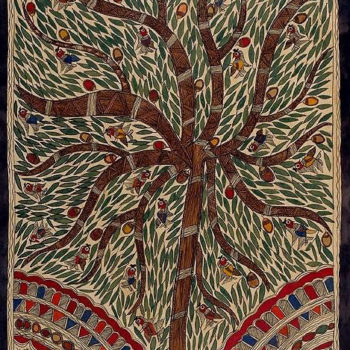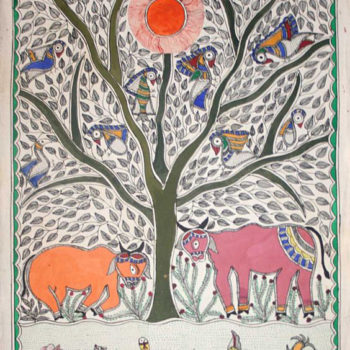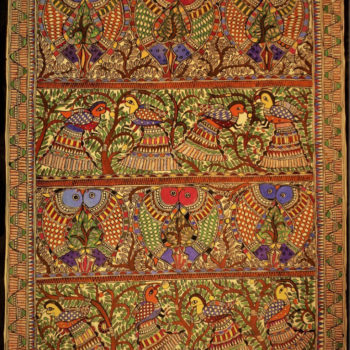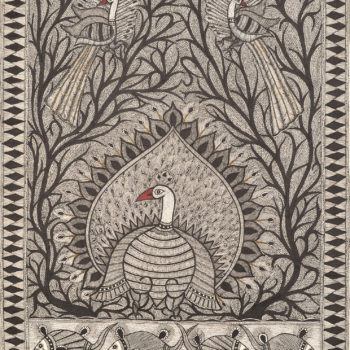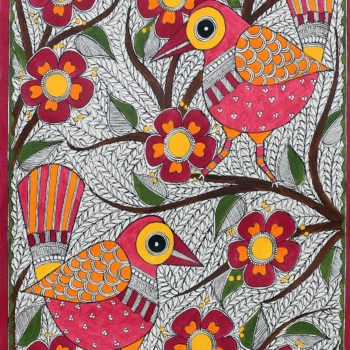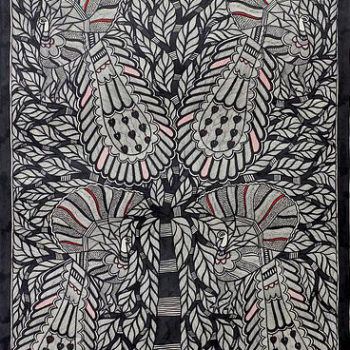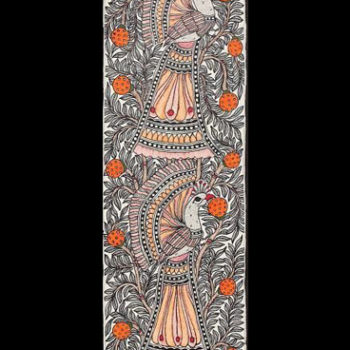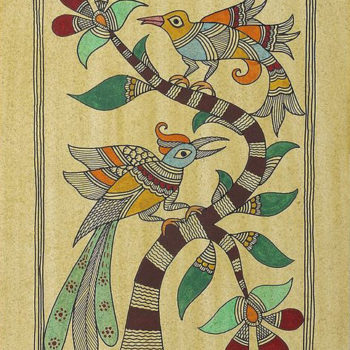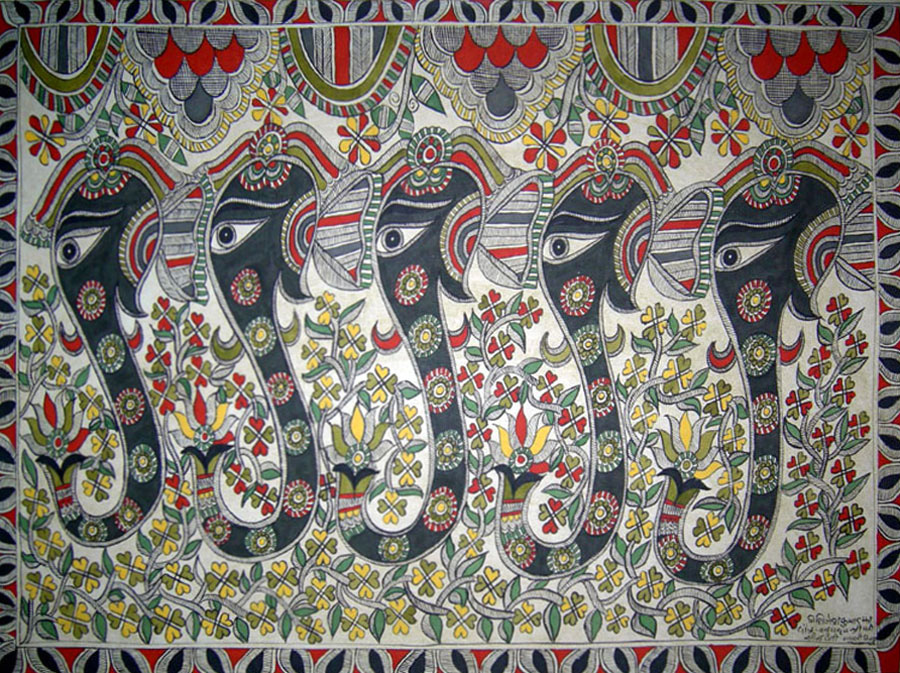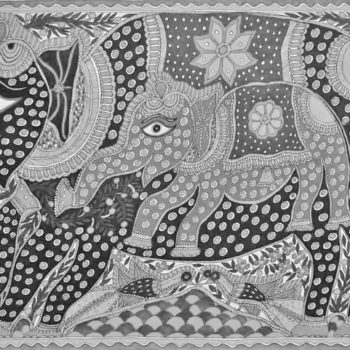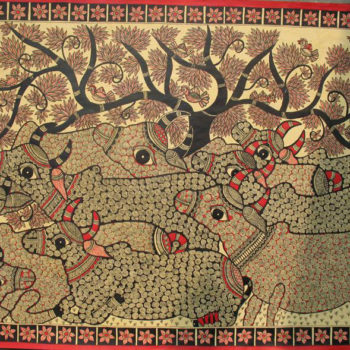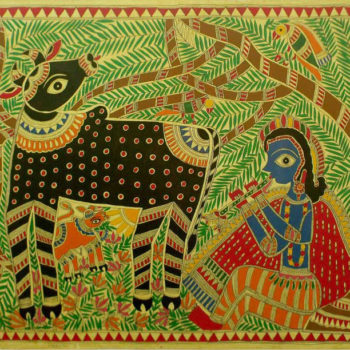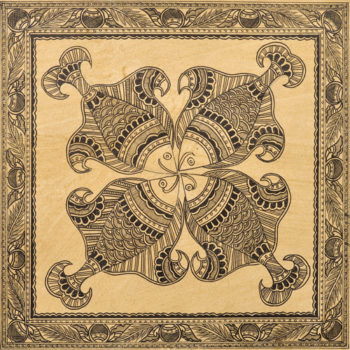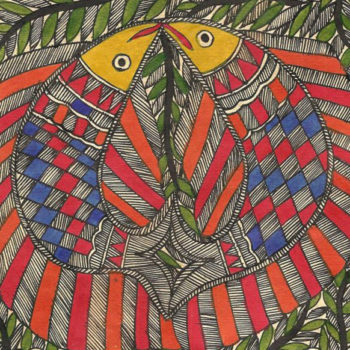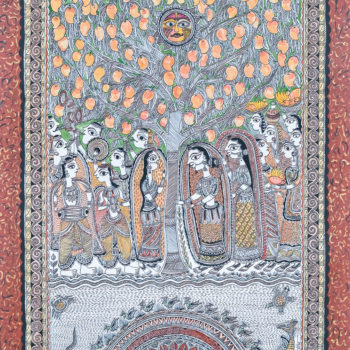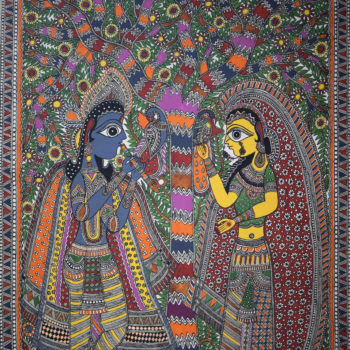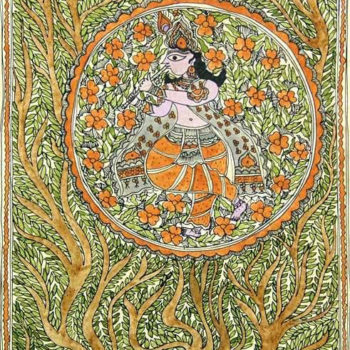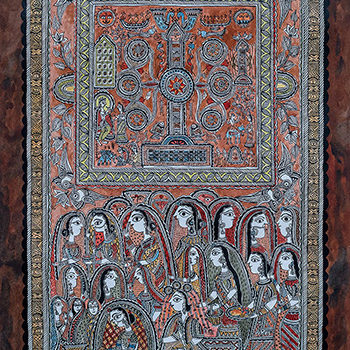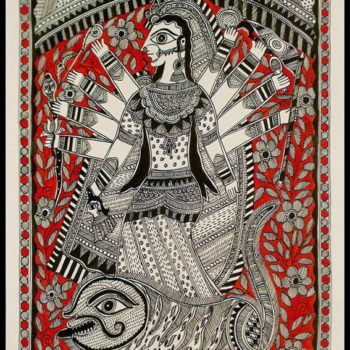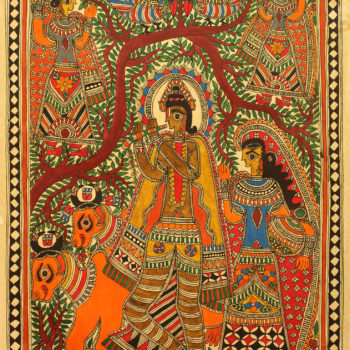25+ years of experience
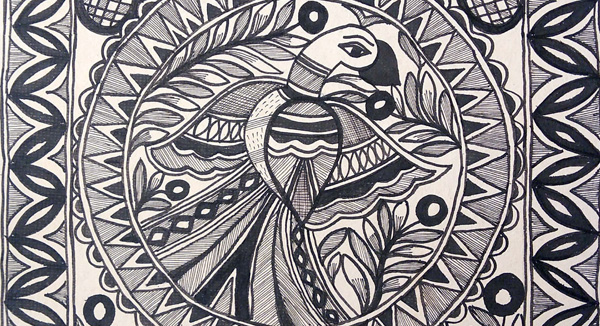
Look at this painting of a peacock. The main motif is at the centre surrounded by intricate detailing with lines, circles, curves, and other geometrical patterns and leaves. One of the stunning elements of these paintings is that no space is left empty!
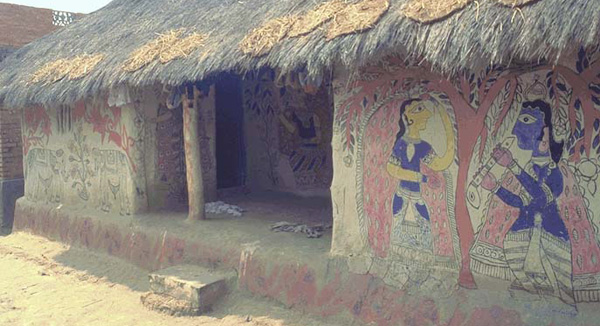
Let us learn more about this fascinating art form from the story of 14-year- old Indu:
Indu is a lover of art who is originally from Madhubani, Bihar, but resides in Patna with her parents. She is very fascinated with Madhubani or Mithila art that originates from the Mithila region of Bihar and is practiced in areas in and around Nepal and Bihar.
Since childhood, whenever Indu travels to her hometown to spend her summer vacation with her grandparents, she watches in amazement how these paintings are created on the floors and walls of houses of their neighbours.
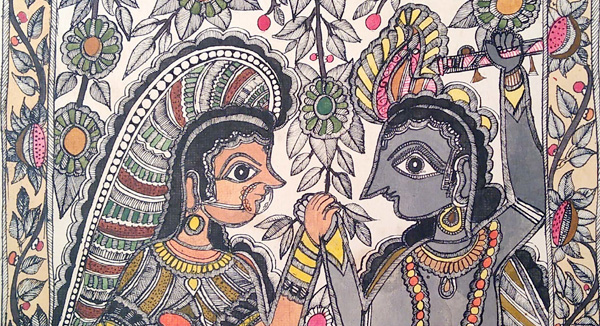
These paintings were made by the women during special occasions, such as festivals and religious ceremonies, especially when there was a wedding in the village. She is floored by the detailing that consists of a series of lines, curves, and a variety of other geometric patterns and how one hardly sees any blank spaces. All blank spaces are also covered up with either motifs or intricate patterns.
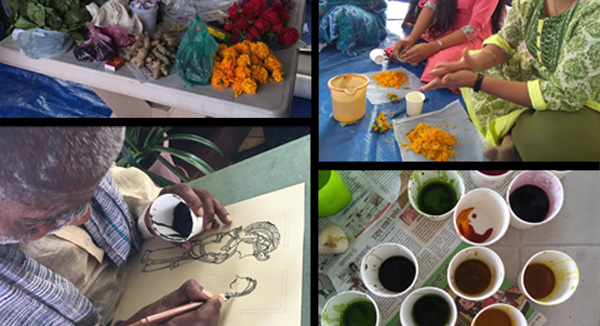
The villagers use twigs, fingers, and matchsticks to paint and rice paste to make the outline. They coat the walls of houses with mud and cow dung, as it allows better absorption of colour. Few artists also follow this technique on canvas, cloth, and paper for an authentic look. They use bright colours derived from natural sources. For example, black from soot, yellow from turmeric, pollen, lime & the milk of banyan trees, blue from indigo, deep red from Kusum flower juice & red sandalwood, green from apple tree leaves & leaves of creepers, white from rice powder, and orange from Palasha flowers.
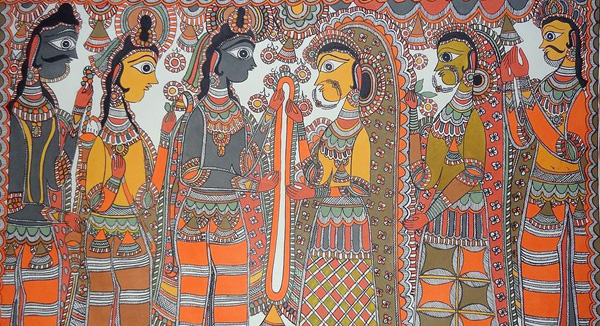
She expresses interest in learning the art form. Her grandparents take her to the home of a local Madhubani artist Sita devi. Sita devi tells Indu the fascinating history of the art from that is said to be 2,500 years old. Indu learns that it is also known as Bhitti Chitra. It is said to exist during the time of Ramayana, when an artist was asked by king Janaka to capture Ram and Sita’s wedding on canvas.
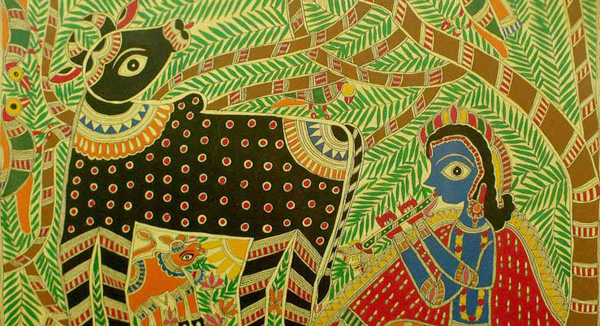
With Sita devi’s guidance, Indu learns to paint birds and animals in their natural habitat, the sun, moon, and other elements of nature.
She learns that Madhubani paintings traditionally portrayed images of gods & goddesses and mythological events such as Lord Ram’s departure to the forest, the birth of Lord Krishna, etc.
Madhubani Artisans
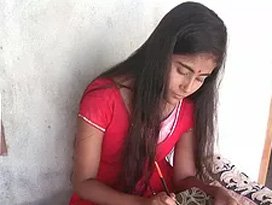
Anupam Jha
Madhubani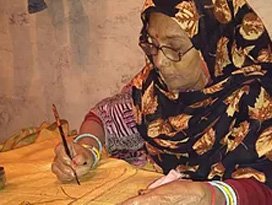
Meera Das
Madhubani30+ years of experience

Ratneshwar Jha
Madhubani25+ years of experience
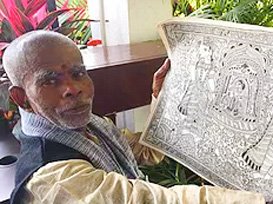
Chaturanan Jha
Madhubani40+ years of experience
Past Workshops
The Store

